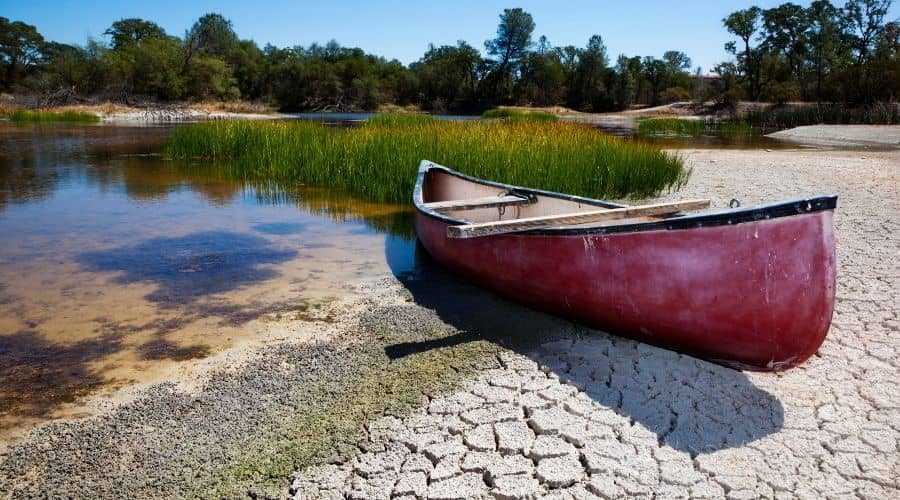
Freshwater is one of the most essential compounds in the world. We cannot live without it. It’s necessary for health, hygiene, and growing food.
Yet, the world has been dealing with water scarcity in the past few decades. The global water crisis is a significant issue growing worse each year. This article will explain why that’s happening and the solutions we can employ to curb water scarcity.
What is Water Scarcity?
Water scarcity is the lack of adequate access to fresh water as the demand for water is greater than the supply. The earth’s surface is 70% water, but only 3% of that is freshwater fit for consumption. Of that 3%, only 1% is available for use, but not everyone can gain access to it.
Over 710 million people lack access to clean water. A total of 2.7 billion people suffer from water scarcity at least once a month.
There are two types of water shortage:
- Physical water scarcity. This shortage results from demand being more than the limited water supply. Around 1.2 billion people live in areas that experience physical water scarcity. That number is expected to grow due to extreme water patterns and population growth.
- Economic water scarcity. This type of shortage is due to mismanagement of water resources. Pollution, unregulated water use, or unsanitary conditions are some examples of mismanagement. An estimated 1.6 billion people face economic water shortages.
Causes of Water Shortages
There are multiple causes of water shortages. Here are some of them:
Overuse and wastage of water
Water is extracted for irrigation and human consumption. Lack of regulation means that the water is over-extracted, and large amounts are wasted. Overexploitation of water is significantly associated with intensive agriculture. It results in the decline of groundwater, springs, reservoirs, and other water sources.
60% of the water used intensive agriculture ends up wasted. This is due to leaky irrigation systems, the cultivation of crops in the wrong environment, and inefficient water use. Humans waste water in their day-to-day lives as well. For example, taking baths, leaving water running, leaky faucets. With a large population, this kind of waste adds up.
Pollution
Pollution makes the water unsafe for consumption for humans, animals, and plants. Many freshwater sources are now too polluted to be used. Chemical pollution comes from unregulated industrial activities near bodies of water. Oil spills in freshwater sources make the water toxic and are difficult to clean. In some areas, raw sewage gets into water supplies.
Overpopulation
The rapid growth of the population means the demand for resources outstrips the supply. Freshwater is being consumed at a much larger rate than it’s being replenished. Relentless consumption of water has drained freshwater sources such as rivers and lakes.
Overpopulation has also led to the overconsumption of food and energy, all of which require water. Unsustainable population growth will continue draining water sources. More and more people will face water scarcity as a result.
Climate Change
Climate change exacerbates water scarcity. It causes extreme weather events and changes water cycle patterns. Rainfall is either too much or too little. Water scarcity occurs when people can no longer predict or prepare for changes in the weather.
Natural disasters such as drought and floods have become quite common due to climate change. Natural disasters destroy or contaminate water sources. The increase in global temperatures causes rivers and lakes to shrink and even dry up.
Effects of Water Scarcity
Water scarcity effects are extensive and impact humans, animals, and the environment.
Effects of Water Scarcity on Humans
The biggest problem with water scarcity is the lack of access to clean drinking water. The human body can only last 3 days without water. Without water you may get dehydrated and suffer serious health issues such as kidney problems. Drinking contaminated water leads to diseases such as cholera and even cancer.
Inadequate access to water leads to poor sanitation. People cannot keep themselves and their environment clean. They eat food with unsanitary hands, their clothes are dirty, and they attract flies. Poor sanitation leads to diarrhea, skin diseases, and dengue fever. Almost one million people die from water and sanitation-related diseases annually.
Water scarcity also leads to hunger. Inadequate water supply means less water for crops and animals.
Education is also impacted. School kids are either too sick to go to school or skip school to help their families get food and water. Many people dealing with water scarcity are thus trapped in poverty. They’re forced to spend all their time accessing resources such as water and food. Illnesses and malnourishment affect their ability to provide for themselves.
Effects of Water Scarcity on Animals
Animals need water to survive. Access to freshwater is more limited for animals. Unlike humans, animals only have access to surface water sources such as rivers. As water sources dry up, animals die from thirst. Water scarcity weakens animals, making them susceptible to diseases and parasites.
Water scarcity affects their food supply as well. Shortages mean less land for grazing. Animals either die or migrate long distances looking for grazing land. Predators also starve as prey animals die or migrate. Some animals have evolved to deal with water shortages, but others are at risk of going extinct.
Water Shortage Effects on the Environment
Water scarcity is causing habitat and biodiversity loss. Plants need water to live, but more and more plants are dying because of water scarcity. This is accelerating the extinction of plant species.
Water meant for ecosystems is being used in agriculture and industrial work. Dams and irrigation systems divert water away from their ecosystems. Pollution has made many water sources unusable and even poisonous to the environment.
As water shortage worsens, people turn to other water sources to exploit. Water sources such as groundwater, wetlands, and reservoirs are being drained at an unsustainable rate. The ecosystems relying on these water sources end up being destroyed.
Consequences of Water Shortages
If we don’t do anything about water scarcity, the problem will continue to worsen. More people will live with an inadequate supply of water. Health issues and death will continue plaguing regions affected by water scarcity. Water scarcity will also speed up habitats and biodiversity loss.
Solutions to Water Scarcity: What Can You Do to Stop It?
So what can we do to curb water loss and ensure the freshwater we have is not depleted? Here are some solutions to water scarcity.
Change your habits
Limit the use of water
Close water taps after use to prevent leaks. Take short showers. Where necessary, skip using washing machines and other appliances that use water.
Learn more: 26 Ways to Save Water in the Home
Recycle water
There is now technology that can allow you to recycle the water you use at home. One easy way to recycle water is by collecting rainwater and storing it for use. Reuse the same relatively clean water for multiple tasks. For example, cleaning your vegetables and using the same water for your plants.
Responsible consumption
Rather than building a large private swimming pool, you can opt for a small or public swimming pool. Buy food from local farmers and support businesses that don’t pollute or overuse water.
Donate
Support organizations that bring water to communities experiencing water shortages.
Use Your Voice
Educate people whenever possible about water scarcity and the available solutions. You can petition corporations to stop overusing and polluting water sources. Ask your government to regulate water use and build adequate water infrastructure.
Water scarcity is a significant problem that needs immediate intervention. Without water, life on earth would be unbearable. We need to act now and protect our remaining water sources.
You Might Also Like:

![]() Stella - Writer
Stella - Writer
Stella is a writer and mother from Thika, Kenya.
Her love for nature and the beautiful Kenyan outdoors has inspired Stella to consciously make an effort to lead a more sustainable, eco-friendly lifestyle.


